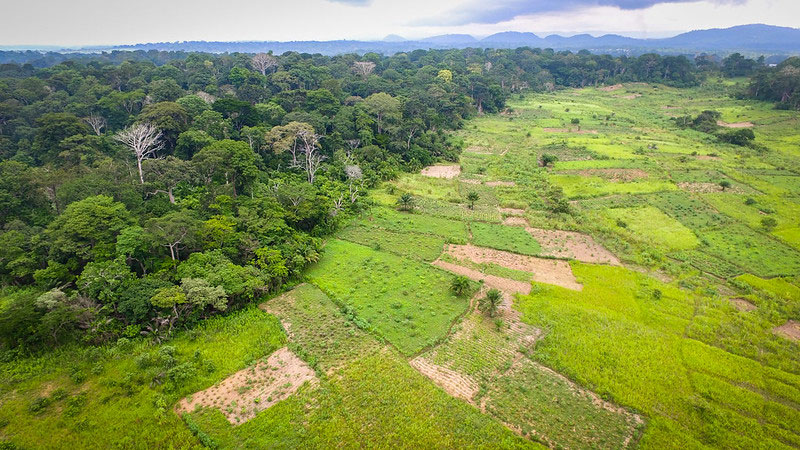It is no surprise that trees, which breathe in carbon dioxide, are key to the fight against climate change. Keeping existing forests intact is one pillar in the ongoing efforts to slow the planet's warming. By one estimate, tropical deforestation is responsible for more carbon dioxide emissions each year than the entire European Union.
Paying local people to protect their trees may prevent the loss of forest cover, at least where implemented appropriately for the context. Many millions of dollars have been invested in such programmes, but unfortunately the quality of research has not matched the level of investment, so these findings remain tentative. There is some suggestive evidence that those payments also help their recipients economically, but the research on that point suffers from a high risk of bias, so it's hard to be sure.
This evidence comes from a systematic review which draws together findings from 44 quantitative impact evaluations of 18 different environmental protection programs, so the results are more reliable than findings from an individual study. The review also synthesizes findings from an additional 60 qualitative studies, which provide insights on programme design and implementation. The environmental programmes took place in Asia, the Caribbean, Latin America, and Sub-Saharan Africa.
This review assembles the best evidence that exists, but nonetheless it is of low quality. More high-quality research is needed to be confident in these findings. For environmental outcomes, one concern is that many studies did not report them, even though it was a programme goal. These missing results suggest imply that there may be publication bias, where only successful programmes publish results, while unsuccessful ones hide them. The evidence on socio-economic outcomes is arguably even worse. Many of the studies which find positive economic outcomes did not identify a valid comparison group outside the program, making those findings less credible. The studies with more credible designs tended to find no effect on recipients' economic well-being.
The environmental programmes in the review, broadly referred to as "payment for environmental services" programmes, varied in scope, scale, and focus. Most of them were focused on protecting existing forests, although some provided incentives to convert farm land back to a natural state by planting trees. Some were national or regional programmes with broad eligibility criteria. Others were quite specific, like Cambodia's bird nest protection program, which provided payments for the protection of the nests of specific endangered birds and the trees they were in.
The programmes which appeared to yield the biggest benefits were the ones where participants were carefully targeted. In terms of environmental benefits, that targeting meant identifying the specific areas which were at highest risk of deforestation. If this targeting was not done correctly, landowners sometimes only enrolled the portions of their land with the least valuable trees, which they would not have cut down anyway.
If a programme's goal was primarily to help local communities economically, that targeting required identifying marginalized and vulnerable social groups. On this front, appropriate targeting was not the only hurdle. In some cases, programme effectiveness was hindered because potential participants either did not know about the programs or did not understand them.
Relatedly, the review suggests that higher-income people with more diversified sources of income and larger landholdings were most likely to participate in the programmes. On the flip side, people whose livelihoods depended more on forests were less likely to enroll. Both of these findings suggest that people consider the opportunity costs of the programmes when enrolling. So in programmes with broad eligibility criteria based on individual-level enrollment, the poorest people are the least likely to participate.
These findings reinforce the importance of targeting. If a programme's goal is to protect trees on poor people's land or to provide them with economic benefits, it would need to specifically target them, ensure they understand the program's benefits, and facilitate their enrollment – as some programmes have done.
Two of the higher-quality studies included in the review were funded and supported by 3ie. One was an evaluation investigating a large-scale program in Mexico, and the other evaluation looked at a pilot program in Uganda. The findings from the Uganda evaluation showing the programme's effectiveness at reducing deforestation were also published in Science.
The Uganda study was the only evaluation to analyze whether the programme led to greater spill-over deforestation on nearby, not-enrolled land. It did not identify any such negative effects of that programme. But since none of the other studies conducted such an analysis, it is possible that such negative spillovers could occur if targeting is not correctly designed.
Payments for environmental services are not the only strategy to reduce deforestation. Our next 2020 Hindsight post will look at decentralizing forest management to protect trees. In short, that approach also appears to help forests, although it may not provide economic benefits.
More details about this review, including a summary brief, are available here. And our Development Evidence Portal has hundreds more systematic reviews and thousands more impact evaluations on a wide range of development topics.
 This blog is part of our campaign 2020 Hindsight: What works in Development. Learn more about the campaign and read past blogs here.
This blog is part of our campaign 2020 Hindsight: What works in Development. Learn more about the campaign and read past blogs here.






good initiative indeed.